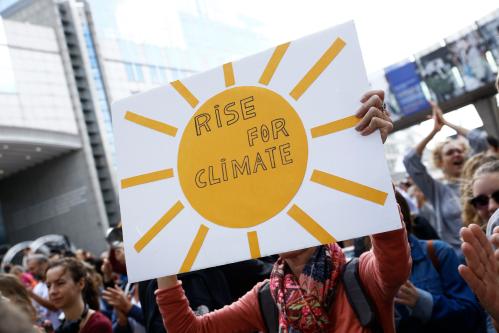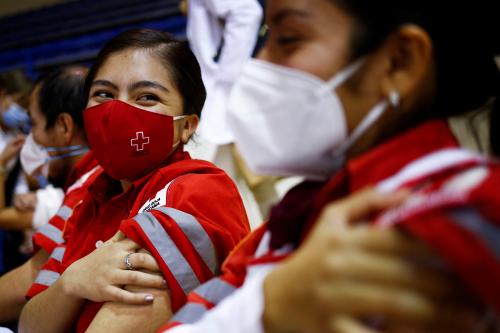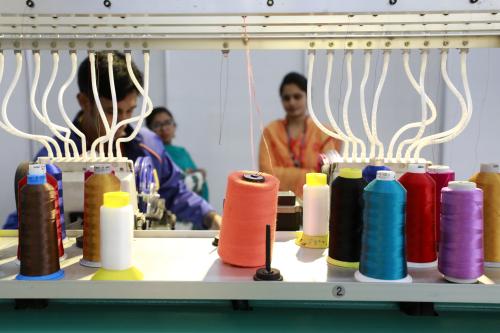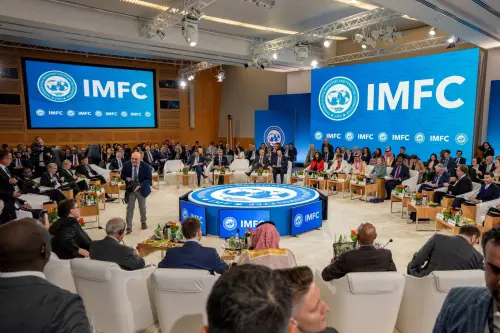To kick off the Future Development blog in 2022, we present the third piece in a series on potential positive stories for the year ahead.
We enter 2022 with trepidation. The COVID-19 pandemic is having another surge, thanks to the omicron variant, setting record-high infection rates. Civil wars and conflict have broken out in the Horn of Africa, in addition to long-standing wars in the Middle East and North Africa. Economies are facing supply chain bottlenecks, incipient inflation, and, in some countries, slow recovery from the recession of 2020. Agreements and rhetoric notwithstanding, carbon emissions, which fell for the first time in 2020, are rebounding rapidly.
Amid all this pessimism, I share two cases of success despite the odds. One happened last year. The other represents a perspective on long-term development that demonstrates the triumph of the human spirit over seemingly insurmountable obstacles.
1. South Sudan
In 2021, South Sudan was heading into a perfect storm. The COVID-19 pandemic was spreading in this resource-constrained country (as one observer put it, “We have more vice presidents than ventilators”). Climate change induced floods were devastating the agricultural parts of the country. While there was a peace agreement to resolve the major conflict between the Dinkas and Nuer, violence was breaking out between smaller groups throughout the country. The economy was declining. Foreign exchange was scarce but the government kept the exchange rate fixed to avoid an inflationary spiral. Not surprisingly, a parallel market emerged. Whereas the official exchange rate was 186 South Sudanese pounds to the U.S. dollar, the parallel market rate was 610. The government was insisting on having all official development assistance (ODA) come in at official exchange rates, which meant this assistance too would soon dry up.
To shore up the foreign assistance without immediately devaluing the currency, the government, with the assistance of the International Monetary Fund (IMF), set up an auction where, every week, a small amount of donor assistance would be sold. Banks and other financial institutions would bid on these dollars and the exchange rate would be that which cleared the market. The experiment worked. In less than four months, the auction rate converged to the parallel market rate and the two rates have been unified since (Figure 1). The lesson? Even in a perfect storm, economic principles apply—and actually work.

2. Bangladesh
Because of its high and steady growth (its per-capita income today is higher than India’s) in the face of high levels of corruption, Bangladesh is often described as a “paradox.” In fact, there are five paradoxes about Bangladesh. First, is growth-with-corruption. Second, Bangladesh has good human development outcomes with relatively little government intervention. Secondary education is provided almost entirely by the nonstate sector. BRAC and other NGOs are also prominent in primary education. The health sector has a strong NGO presence.
Third, Bangladesh’s industrial policy has been characterized by the supremacy of “deals” rather than rules and a fair amount of elite capture. Yet the country’s ready-made garment (RMG) industry has grown exponentially, employing millions of women. Fourth, Bangladesh’s tax-to-GDP ratio is at a very low 9 percent, but the country has maintained macroeconomic stability throughout its history. Fifth, the banking sector has high levels of nonperforming loans and other signs of fragility. But this is the same country that developed a successful microfinance industry that has spread around the world.
The explanations for these paradoxes lie in geography and history. Bangladesh has a densely packed, relatively homogeneous population. As a result, ideas and innovations spread like wildfire. A few NGOs introduced contraception in the 1970s and soon the whole country was practicing family planning. When Muhammed Yunus introduced microfinance, it took off throughout the country—before the government could regulate this instrument, which may explain its success in Bangladesh relative to India, say. When the Liberation War ended, Bangladesh’s health and education systems were in disarray. International NGOs started delivering these essential human services. They were so successful that, when the government of the new country began engaging in these sectors, they found that it was better to have the nonstate sector continue to provide the services. To get around the high import tariffs that were protecting connected individuals, the government introduced bonded warehouses, where firms could import goods duty-free for producing exports. Before long, everybody had access to cheap imports of yarn and the RMG sector took off. Finally, the government maintains macroeconomic stability despite low tax revenues because of skepticism about advice from external partners, which inevitably accompanies a program with the IMF.
The common feature of these explanations is that the private sector in Bangladesh performs relatively well in the face of a dysfunctional government. We call this a paradox because it runs counter to our standard view of government being supportive of the different aspects of development, such as job creation, credit, health, and education. But if the government cannot be supportive, and, for reasons of geography and history, the private sector is delivering these services effectively, perhaps they should continue to grow in this way. In short, Bangladesh is not a paradox; it is a unique model of development.







Commentary
Success despite the odds: South Sudan and Bangladesh
January 14, 2022